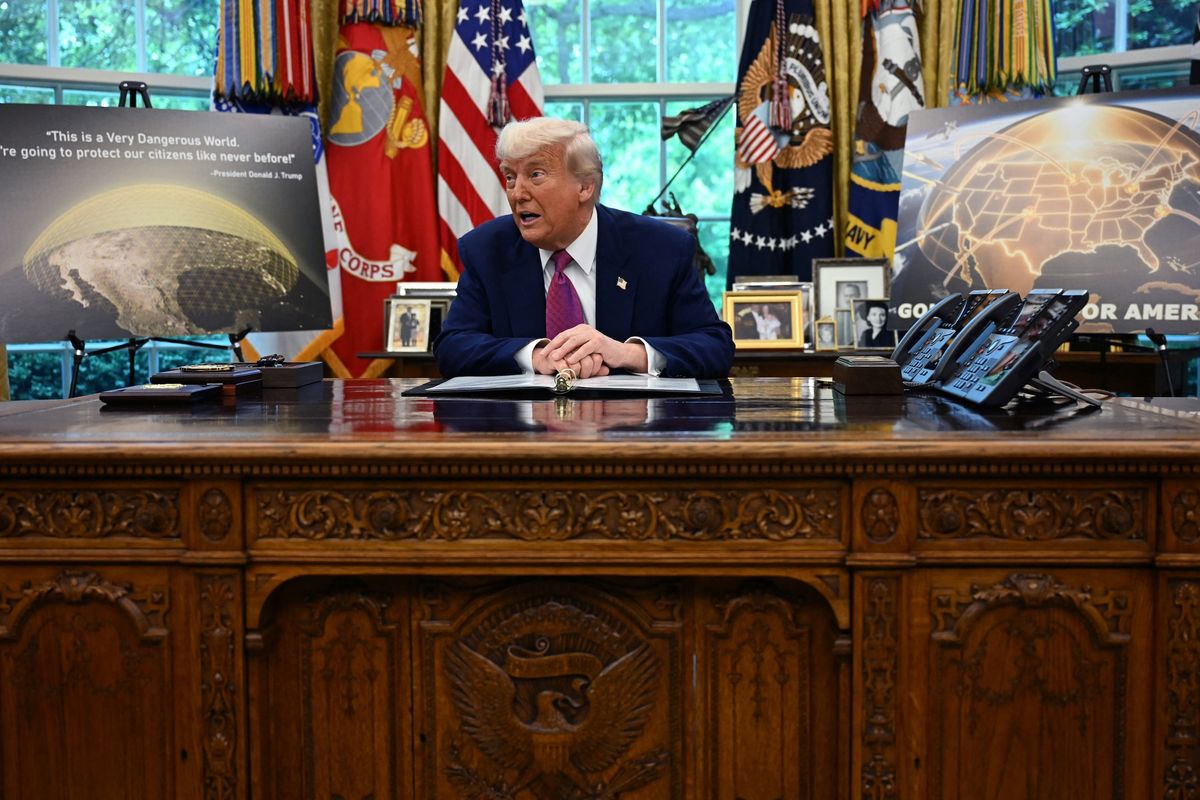Cipher Brief Expert Robert Eatinger is former Deputy General Counsel and Acting General Counsel of the Central Intelligence Agency and retired Captain from the Navy’s Judge Advocate General’s Corp with a combined 30 years of active duty and reserve service.
EXPERT OPINION — China seeks to challenge US technological supremacy and is investing heavily in R&D. According to a recent report by the Center for A New American Security, Beijing “strives to achieve technological parity, and eventually technological dominance.” Russia, too, has been flexing its technology muscles, announcing in December that it has deployed a hypersonic weapon. The U.S. must respond to these challenges or risk losing its military advantage.
To be effective, a response must include changes to how the military develops and buys goods and services. Our defense acquisition system, built to prepare the United States to combat the Soviet Union during the Cold War, and since gilded with laws and regulations that unfairly treat the entire defense industry as greedy and inefficient for the misconduct of a few, is not up to the challenges posed by a resurgent Russia and an emboldened China. The U.S. must change the way it approaches defense acquisition or risk losing its military advantage.
The United States’ response thus far has been to update and release new regulations for the acquisition process. In the past year, the Office for the Under Secretary of Defense for Acquisition and Sustainment issued a new policy on Intellectual Property (IP) Acquisition and Licensing and rewritten or updated guidance for the acquisition process, including the Intellectual Property (IP) Acquisition and Licensing and the Operation of the Adaptive Acquisition Framework. While this is a step in the right direction – and one we have seen before at the start of the Obama administration– it is not enough.
The unclassified synopsis of the 2018 National Defense Strategy warns that the United States is returning to long-term strategic competition with China and Russia with a competitive military advantage that has been eroding. The Strategy recognizes that it is untenable to adopt a strategy of “fighting tomorrow’s conflicts with yesterday’s weapons or equipment.” The key to creating decisive military advantage in the future is American technical innovation to create the weapons, systems, and capabilities of the future. This strategy depends on a healthy and secure national security innovation base and an acquisition process streamlined to allow new entrants and small-scale vendors to participate and provide cutting-edge technologies, and a faster, iterative approach to cut the time between design and delivery. The NDS promises that DoD’s “leadership is committed to changes in authorities, granting of waivers, and securing external support for streamlining processes and organizations.”
The 2018 National Defense Strategy call for streamlined defense acquisition is easier said than done. In 1985, responding to the public’s outcry after press reports of wasteful, poorly managed military procurement problems, including stories that the military paid $600 for hammers and over $600 for a toilet seat, President Reagan established the Packard Commission, more formally titled the Blue-Ribbon Commission on Defense Management and headed by David Packard. The Commission noted that the legal regime for defense acquisition was “impossibly cumbersome,” in part because the Congress and DoD had sought to make management improvements in the defense acquisition process by passing new statutes, resulting in more detailed and extensive regulations. Despite this cause-and-effect language in the Packard Commission’s report, Congress reacted to the Commission’s recommendations by passing new statutes, and the Defense Department and Services in turn issued new regulations. The process was not streamlined.
Just as happened in the past, the new statutes and regulations did not result in a streamlined defense acquisition process or shorten the time from design to delivery of a new weapon system. If anything, the process has lengthened and grown more complex. A more complex, lengthier process is not conducive to innovation. The greater the number of regulations, the narrower and more specific the specifications, the less room there is for innovation. As Senator John McCain put in during a December 1, 2015, Senate Armed Services Committee hearing, “complex regulations and stifling bureaucracy impede innovation.”
The present process hinders innovation because it requires acquisition plans to be developed so far in advance of delivering a weapon system that it fosters fielding a system after it is no longer the state of the art. Once the weapon system development process starts, it can become difficult or impossible to take advantage of innovations that occur during the development cycle. The lengthier the development cycle, the greater the number of innovations that may arise and not be incorporated into the weapon system before its delivery., at least not without extending the development cycle and costly new engineering requirement. Not only does a drawn-out acquisition process make it difficult to incorporate innovations once the process starts, the process does not incentivize the developers to look for innovations to incorporate. As explained by Joe Shepherd of Booz Allen Hamilton, in a November 2019 article in National Defense, “VIEWPOINT: Speed-of-Light Weaponry Requires Faster Acquisition Timelines”:
When the plan is set years before execution, it is guaranteed to exclude meaningful technology developments that happen in that intervening time. With no mechanism to sell a new idea that emerges too late to be planned in, there is no incentive for the developer to introduce technology advances that could increase capability or operational suitability, and the government has no meaningful way to extract or reward cutting-edge solutions over older technologies that meet minimum requirements.
A complex, burdensome defense acquisition system may not be conducive to position the United States to succeed and win this new period of great power competition. The United States’ technical advantage, healthy economy, and strong industrial base were important factors in it emerging from the Cold War—the last period of great power competition –as the world’s lone superpower. That technical advantage, however, in no small measure resulted from Americans’ ingenuity and ability to innovate and industry’s capability to turn those innovations into realities faster than its adversaries. Hamstrung by the lengthier and more complex acquisition process it has created today, the United States may be less able to rely on American’s innovation to keep its technical advantage. Our strategic competitors, Russia and China, do not lay as heavy a legal regime over their respective defense acquisition processes. In fact, the Chinese government, according to James L. Schoff, uses targeted, relaxed regulations to actively support innovation.
The stilting impact of the defense acquisition system on the military’s access to commercial innovation is well recognized by the Congress, but it has found it difficult to address. Through Section 809 of the National Defense Authorization Act for Fiscal Year 2016, Congress required the Secretary of Defense to establish the Advisory Panel on Streamlining and Codifying Acquisition Regulations to review defense acquisition regulations and make recommendations intending to streamline and improve the efficiency and effectively of the acquisition system and to maintain our military’s technology advantage. In its January 2019 report, the Panel recommended acquisition regulations be updated to decrease cost, prevent delays, remove barriers, and encourage innovation available to the Military Services. But, do we need to update the regulations, or reduce them?
What might happen if Congress and the Defense Department actually sought to streamline the defense acquisition process without creating new statutory and regulatory requirements? To gain a better appreciation for what industry can do when allowed to use its strengths and judgment without regulatory micromanagement, one need look no further than Skunk Works the 1994 book by Ben R. Rich and Leo Janos. The book tells the story of how the Lockheed office known as Skunk Works was able to design, develop new materials, build, test, and deliver beyond state-of-art aircraft in a comparatively short period of time. The book’s chapters on how Skunk Works overcame enormous technical challenges to build the U-2 and the CIA’s OXCART (better known by the designation given to the later Air Force version, the SR-71 Blackbird) are possible case studies for how freedom from bureaucracy and regulations allowed Skunk Works to innovate at speed and deliver these aircraft in far less time than it would have taken working within the strictures and requirements of defense acquisition regulations. The aircraft were delivered while their technology was still cutting-edge. The model should be emulated today to field more defense weapons systems.
Read more national security expert opinion, insights and analysis in The Cipher Brief












